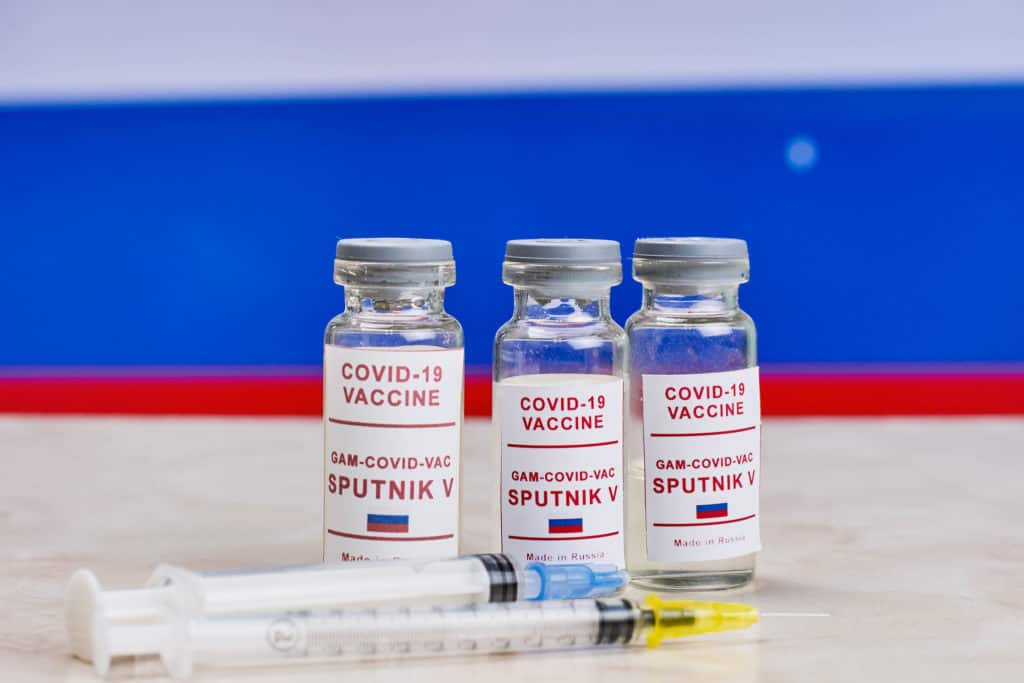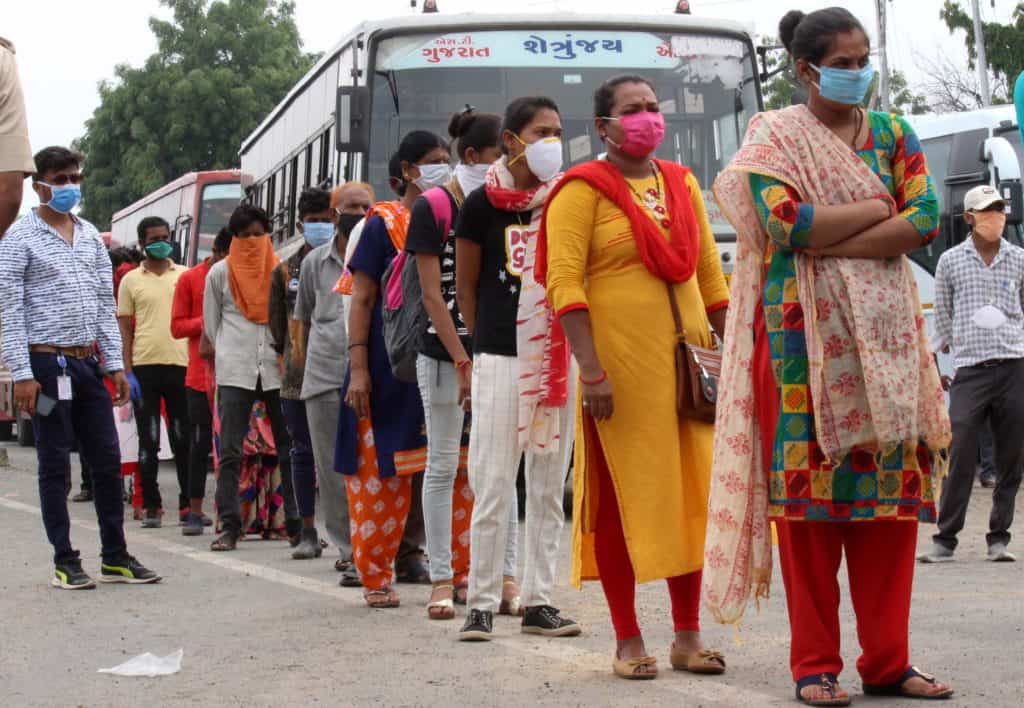In the first part of our conversation with Dr Anant Bhan, Bhopal-based researcher in Global Health, Bioethics, and Health Policy, we asked him some of the common questions that citizens are grappling with today in the face of a stark vaccine shortage, coupled with frequent changes in policy. Continuing the conversation, we look at the overall data sufficiency on vaccines, the disease itself and its overall implication for the management of the pandemic.
Edited excerpts below; for the entire unabridged conversation, scroll down to find the video link:
Veering to the big picture, just weeks back, we had hundreds of scientists writing to the Prime Minister complaining of gaps in “systematic collection of epidemiological data as well as lack of systematic surveillance of coronavirus variants”. We even had a senior virologist resign from the chair of the scientific advisory group INSACOG, which is also being interpreted by many as a fall-out of similar concerns. Now, going back to the terminology of the letter, could you explain these gaps in simpler terms for the lay citizen, and how they could be affecting the response to the pandemic?
Any good policymaking, especially in the public health perspective and during a pandemic, has to be essentially data-driven: looking at what is the evidence on the ground.
The kind of things you want to look at are: Where are the cases happening? What kind of cases are happening? How quickly are they happening? Is there clustering happening? What are the patterns that you’re starting to see? Because these things can help you respond quick enough and if you respond quickly, there is a likelihood that you will prevent further spread, or at least decrease the rate at which it spreads. That’s where epidemiology becomes important.
Linked to that, you have to try and track what kind of virus variants might be causing the disease. Is there a new variant, which is causing more infections? Where is it localized? What are the kinds of features that you’re seeing? So, you need to link that to surveillance or genomic analysis. But that also calls for quality testing and having that data readily available, analyzed. The data must be authentic and communicated in a transparent manner.
If you don’t do enough testing, if you don’t do adequate lab-based analysis and genomic surveillance of a sufficient number of samples, if you’re not being honest and upfront about the data, then of course the available information is going to be limited by that deficiency. That would mean that corrective steps or steps required in response to that data cannot be initiated.
Read Part I of the interview here: COVID vaccination: Expert agrees with ‘First dose fast’ policy
Our experience, even pre pandemic, tells us that there are areas where we need to build more capacity: We need better epidemiological expertise at the state level, at the national level disease outbreak response. We need more human resources, we need more lab assistants, and lab laboratory networks, which have the expertise to carry out such analyses. And then all that data needs to be analyzed and used for good policy making.
You know, we could have learned from last year and done better this year. Some progress was certainly made. Labs were set up, a few states employed epidemiologists or at least advertised for them. But a lot of that was also done short term. Posts were advertised for three to six months, but then the people were let go when cases started declining. Or you had an app devised, or a temporary centre set up, but did they continue to be funded? Was it a one time investment? Did you ensure that these labs are still up and running and could help contribute to quick identification of cases locally? I think those are the kinds of questions we still don’t have any clarity about. And it’s extremely important for us to work on these issues.
I think one of the lessons for all of us is that we need continued investment, not just in infrastructure, but also in human resources and in whatever is needed to make good quality data being available. Data has to be gathered not only on the testing and epidemiology front, but also on the kinds of treatment being applied, the clinical experiences of people.
We also should look at possible ways of sharing information, let us say, on the number of cases of a particular condition. For example, now, there’s a lot of worry around mucormycosis, the so-called “Black fungus”, but do we have any kind of a registry, nationally or at the state level, which could tell us how many cases have been seen both in public and private hospitals? States like Maharashtra, for example, have talked about doing a registry of their own, but these are the kinds of things we should have a national database on, so that we are able to assess the real burden of that problem and very quickly try to address it. Now with the disease being made notifiable, hopefully we will see more information on the burden.
So when it comes to data, do you think the problem lies in collection? Or is it that the data exists but is just not transparent enough?
It’s a mix of both things, I think sometimes data is not adequately collected or it might be collected in a way which is not very useful. Sometimes data is also not communicated all the way to policymakers or to decision makers who can use that data for quick decision making.
For example, data might be collected on paper, but by the time it is actually translated and communicated to senior level functionaries sitting at the state or the national level, it may be too late or some of it may have been lost. Strong systems, which ensure that you also have check-ins to ensure that the data coming through is authentic, are important. So I think we certainly need more data to be collected, but data which is purposeful and has implications from a public health or a decision making perspective. Such data must be accurate, collected correctly and communicated properly.
There are also concerns about the lack of enough data or trials on certain sections or ethnicities. At this juncture, and if we look at the three vaccines which are in use or been approved for use (Sputnik), how seriously would you rate concerns about lack of data and proven efficacy among vulnerable groups? Is there a worry that in the face of the current pressure, we may be hurrying things on the front of checking for immunogenicity etc. Is there a way for us, as citizens, to be assured of due diligence?
Yeah, so we have standard systems at the regulatory level, which are supposed to respond to all of these issues by looking at the data.
The regulator has an important role to play here. And that role is to provide oversight around clinical studies on drug development or vaccine development, followed by the way that these drugs or vaccines or any other medical intervention is rolled out, which has a regulatory angle to it. The problem we’ve seen since last year is that a lot of times decisions have been taken but the background rationale or supportive evidence behind those decisions were not communicated.
Read more: COVID-19 second wave: Why no one saw this coming
So it’s been a while since those decisions were taken, and we still haven’t seen that data. Bridging data or efficacy data from Phase 3 studies are not yet published and available in the public domain. If there is a new vaccine from a foreign country coming in, is there even adequate data? Where was that data collected? Where was it published? Have concerns expressed by other regulators been taken into account or not?
I think there are a lot of question marks on all of these and that should worry us, because while it’s extremely important for us to enhance our vaccination coverage, we also need to do it in a way where we have confidence about the vaccines being used.
The data so far is actually very supportive of these vaccines being largely safe, because they have been used now on millions of people. But that said, there is always the small chance of adverse events being missed. This should not be the case; we need to know the kind of adverse event profile profiles these vaccines have.
Similarly, you know, for efficacy, what do the studies indicate? What is the real world effectiveness that we are seeing? How are we analyzing it and who’s keeping track of all this? Are we taking into account concerns expressed by other groups — either scientists or drug regulators in other countries who have also looked at those datasets?
Whenever we make a decision, it must be backed by a detailed explanation of why those choices were made, and on the basis of what data. If you just have one or two lines of description of approval or disapproval, it doesn’t tell you a lot. At this point of time, I feel it would really help to have more transparency and more back up information around the decision making we have seen.
My last question. Without beating around the bush too much, we are in a deep mess right now. What do you think should be the immediate steps that both governments and the people should follow to come out of this and prevent recurrence of a situation such as this?
There are a few things. One is on short term responses, which are certainly contingent on what the issues are at present. When there is a major challenge, especially from a critical care perspective — for example, when oxygen is a concern — obviously you can’t be doing long term planning, you’d have to do something immediately that could save lives.
Read more: Not just a supply crunch: The real reason why patients in need of oxygen are suffering
I think we are certainly better at it now, because we have more oxygen being produced domestically as well as more oxygen available through imports, we have more oxygen concentrators, etc. But then there are concerns around access or availability of drugs. There seems to be a fair bit of a shortage of certain drugs, for example, for mucormycosis now. These are the kinds of things we need to be on top of and be able to address quickly when a situation arises. Otherwise it leads to panic, it leads to black marketing, and to situations where families are running around trying to access drugs. And obviously, that is not the kind of situation you want to put people in.
A second linked issue is evidence-based medical practice and decision making. The fact that convalescent plasma usage was continued for so many months, even in the absence of any data that showed it had benefits (including from studies done in India and by the ICMR) is a cause for concern. This is the kind of thing you want to avoid; you should be focusing on what we know works and then do that well, rather than go into areas where there is no evidence. That leads to a wastage of resources and a lot of families coming to grief unnecessarily, for example, about not being able to source plasma in this case.
It has been finally excluded from the ICMR treatment guidelines recently after sustained advocacy.
The third thing to note is what we have learnt from last year’s experience, which perhaps we did not pay enough heed to. But that has been substantiated this year and it clearly tells us that there is a need for more investment in social sectors like health.
You need to have more GDP expenditure (on health), and you need to spend it well, while building more efficiency into the system. You need more facilities, but you also need primary health care reforms so that there can be more early level management and prevention at the primary and secondary care levels.
We need to ensure that there are adequate staff available in the public health sector across the board, we need to create enough posts in specialised departments such as epidemiology, etc. And we need to do this fast.
There are also learnings from best practices; for example, what may have been done in Kerala or in Mumbai or in the northeast. We must be able to learn from that, adapt that and scale that up across the health system. We must ensure that we have enough capacity within the health system to be able to manage a future rise in either COVID-19 or a future pandemic or a crisis like this.
It is also important to be able to do all this while catering to health needs unrelated to COVID. One of the problems right now, and also last year, is the fact that almost everything has become COVID-centric. But what about those who have other conditions? If I have a dialysis requirement, or cancer care requirement, or a surgery requirement, will the system be able to offer me the services I need? Probably not.
Given that there’s been so much focus, and almost entire hospitals, including tertiary care institutions, have been converted to COVID-care institutions, there could be significant downstream impact on TB or malaria or other infectious and non communicable diseases. We need to also think through that and take steps to ensure that, while we focus on a response to an immediate crisis, like a pandemic of this intensity, we are also able to cater to the needs of those who might have unrelated disease conditions.
All this is extremely important, but this is only going to happen if you, me, and all of us keep that pressure on our policymakers. And ensure that health becomes also a political requirement. You know, if you’re fighting an election, you have to fight that on what you are going to do better next time on the health management front.
How are you going to rebuild the health system to make it stronger? And how are you going to invest in that? Do you have a clear time map and deliverables for that?
All of us should expect that our policymakers or politicians will stick to these and hold them accountable for it.
Watch the full conversation on video here:



